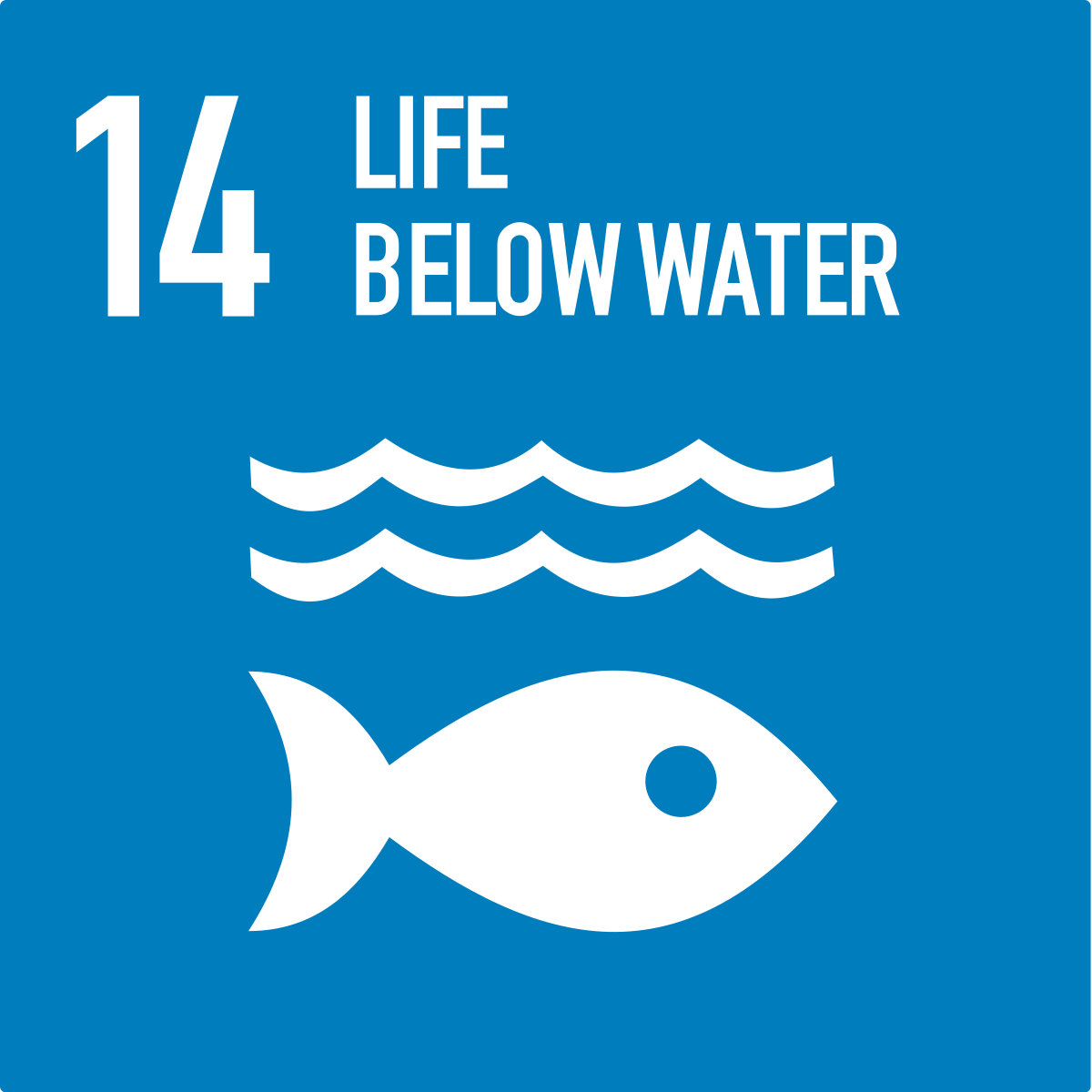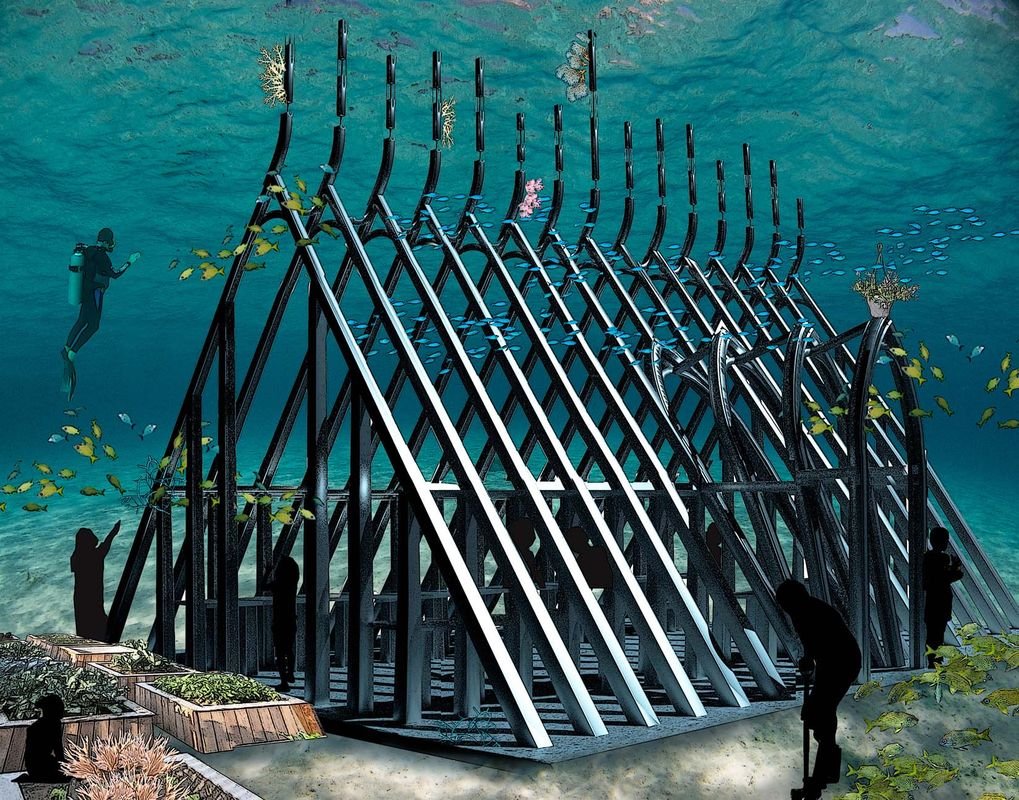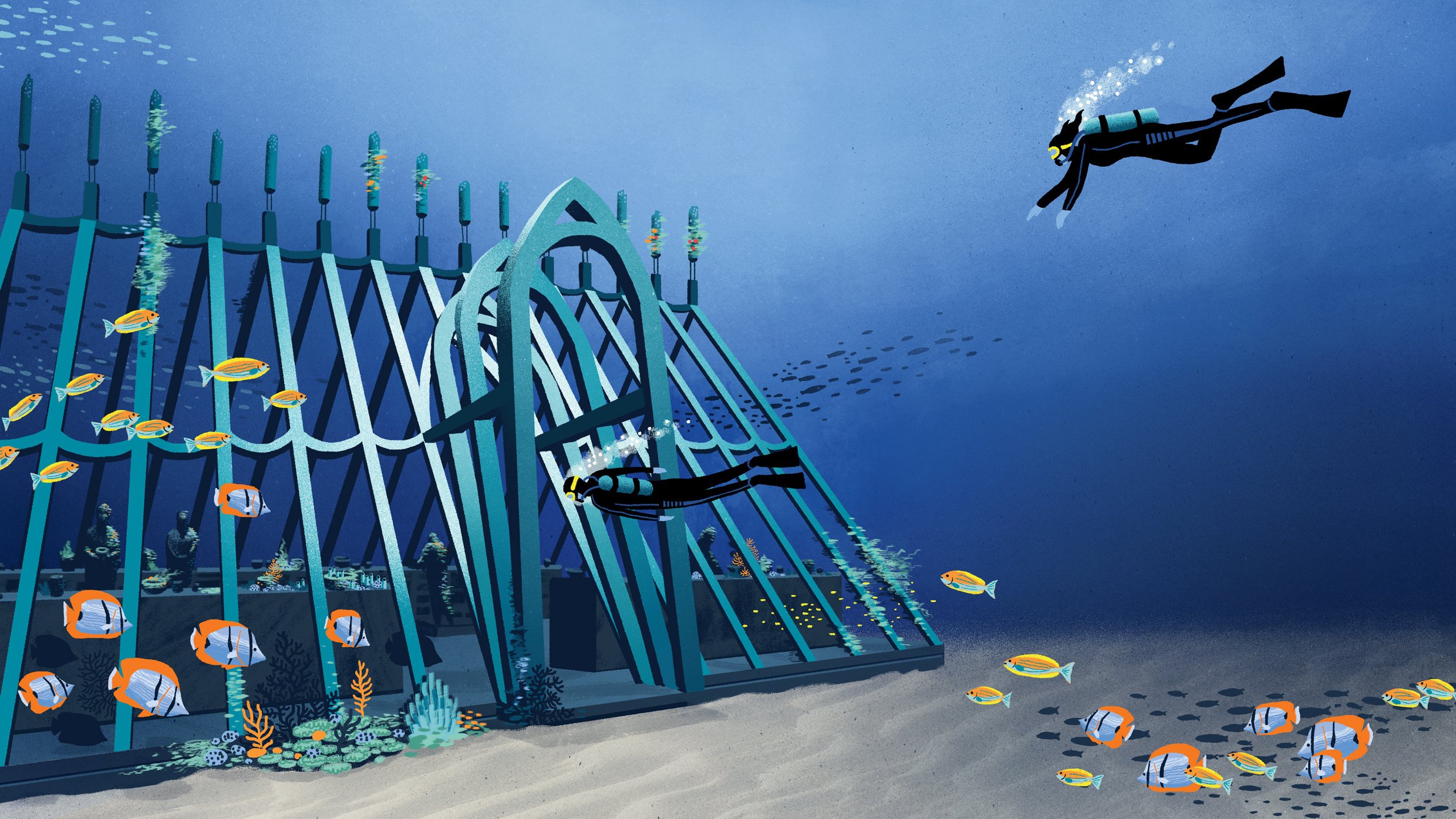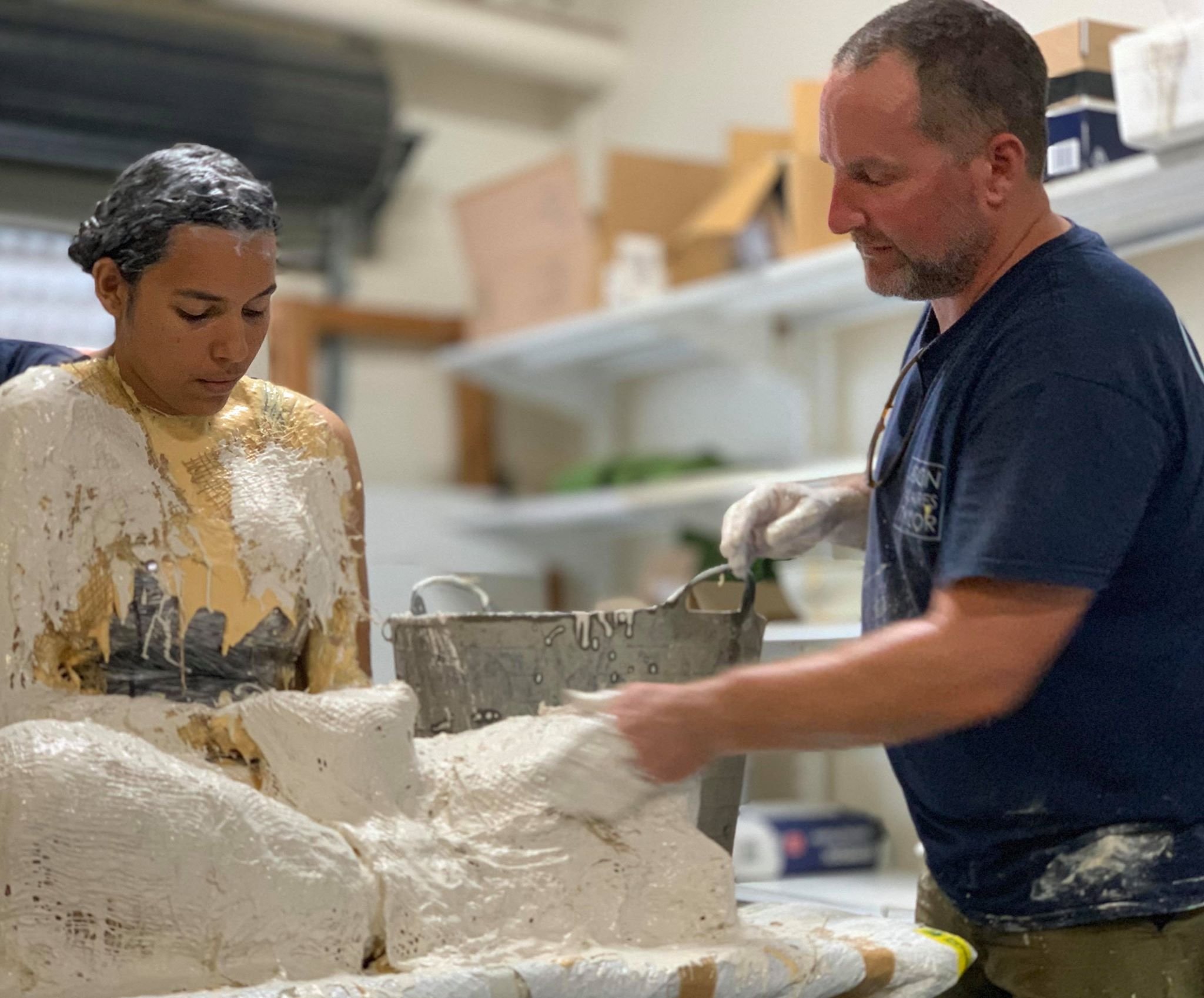Vision & Mission
Inspiring Reef Conversations
The Great Barrier Reef, a UNESCO World Heritage site and the world's largest collection of coral reefs also know as the Sea Country to First Nations people, is an awe-inspiring wonder that holds immense ecological significance and economic value. It is our duty to preserve this global treasure for future generations to come.
The Museum of Underwater Art (MOUA) plays a vital role in safeguarding the reef by offering an inspiring and educational experience that encourages positive conversations and garners media attention. Through a captivating blend of art and science, MOUA effectively addresses the challenging issues of climate change and coral bleaching, inviting everyone to participate in protecting the reef.
One of the most powerful aspects of MOUA's work is the creation of stunning underwater sculptures that showcase the spectacular growth of corals. These sculptures tell a compelling story: the reef has the capacity to recover, and each one of us can contribute to its resilience through simple, everyday changes.
Situated at the heart of Australia's marine biology research and reef management efforts in Townsville, MOUA aims to become a central gathering point for the diverse groups striving to safeguard the Great Barrier Reef. By merging art and science in one location, MOUA fosters collaboration and synergy among these dedicated individuals and organisations.
To support our mission, you can contribute by booking a diving or snorkelling tour, making a donation, sponsoring our installations, or partnering with us to amplify your own message of reef conservation. Together, we can make a difference in protecting this extraordinary natural wonder.
“It's a living piece of art that communicates to the people how important research is, how important coral reefs are, and how all these aspects – art, science, humanity – can come together to protect the reef.”
Dr Katharina Fabricius, Ocean Sentinel
More Reviews
Sustainable Development Goals
How MOUA supports the United Nations Sustainable Development Goals:
SDG 13: Climate Action
MOUA is deeply committed to addressing the challenges posed by climate change to help protect the Great Barrier Reef or Sea Country as it is known to the First Nations people. The stunning coral growth on our captivating underwater art installations serves as a powerful visual reminder of the reef's resilience and its capacity to recover when given the chance. By generating awareness for the issue, MOUA plays a pivotal role in inspiring climate action by encouraging individuals to take concrete steps in their daily lives to reduce their carbon footprint. We firmly believe that collective efforts, starting from small changes, can make a significant impact.
SDG 14: Life Below Water
As a dedicated protector of the Great Barrier Reef or Sea Country as it is known to the First Nations people, MOUA advocates for the preservation and sustainable management of marine ecosystems. Our location in Townsville, at the heart of Australia's reef management efforts, allows us to collaborate with various organisations to address critical challenges such as coral bleaching and reef degradation. By merging art and science, MOUA provides a unique platform for marine conservationists and researchers to come together, fostering innovation and knowledge-sharing to ensure the long-term health of marine life and habitats.
Help us help the Reef
Support us in drawing attention to the challenges the reef faces.
The Team
-

Paul Victory
Chair, Tourism
-

Adam Smith
Deputy Chair, Conservation
-

Kerrie Horrocks
Board Member, Education
-
Christian Bartens
Board Member, Marketing
-

David Anstee
Board Member, Grants
-

Liana Heath
Board Member, Talent
-

David Standen
Board Member, Partnerships
-

Kirsty Silbert
Board Member, Legal
-

Chris Gill
Board Member, Events
Connect WITH us on Linkedin or Email us aT team (AT) moua.com.au to get in touch.
★★★★★
“A trifecta of art, conservation and education. MOUA is in a constant state of flow, enhancing the natural beauty of the nearby reef AND providing unique shelter for a diversity of marine life.”
Julia Saper, Visitor
More Reviews
History So Far
The Museum of Underwater Art (MOUA) is a remarkable institution that emerged from a collaboration between the North Queensland tourism industry and the science community. The project began to take shape between 2013 and 2016 when the region started hosting University students and educational groups for citizen science projects around the Great Barrier Reef. During this time, there was a growing interest in combining educational tourism with marine conservation efforts.
In 2016, Reef Ecologic, led by Dr. Adam Smith, organized a Reef Leadership course in Townsville. Among the attendees was Paul Victory, chair of SeaLink and North Queensland Tourism, who had experience in the tourism industry and saw the potential of leveraging tourism for the benefit of the Great Barrier Reef. Another participant in the course was the marine park Director from Cancun, Mexico, who had experience with an underwater museum.
Inspired by the concept of an underwater museum, Dr. Adam Smith, Dr. Paul Marshall, and Paul Victory reached out to Jason deCaires Taylor, an internationally renowned artist known for his underwater sculptures, to explore the possibility of creating a major sculpture installation project for the Great Barrier Reef.
In June/July 2017, Jason deCaires Taylor was contracted to conduct feasibility work for the potential project. The concept received strong early regional interest, and MOUA was officially established as a corporate identity. It became a Company Limited by Guarantee, a not-for-profit local community organisation with charitable status, and set up various fundraising initiatives.
In July 2017, MOUA introduced Jason deCaires Taylor and the concept to the Townsville business network during a Townsville Bulletin Breakfast, attended by nearly 300 guests. With growing interest and support, the MOUA Board managed to raise $800,000 in local funding for the project. Additionally, the Queensland Government pledged $1 million in support later that year.
As the project gained momentum, MOUA engaged in various community engagement conversations and appointed key project management partners. The museum's designs were influenced by Indigenous stories from the Sea Country to connect the cultural story of the land and sea with the marine conservation theme.
In late 2018, MOUA submitted a Great Barrier Reef permit application, initiating the process for the installation of the artworks. Among the exhibits planned was the Ocean Siren, a public exhibit and MOUA signpost designed to change colour with the ocean temperature to raise environmental awareness and increase knowledge of marine ecosystems.
The Ocean Siren, inspired by 12-year-old North Queensland Wulgurukaba girl Takoda Johnson, was constructed locally in Mackay, North Queensland, and installed in late 2019 after receiving the necessary approvals.
The initial stage of the project also included the creation of the Coral Greenhouse, a preferred design for the core of the underwater museum. The 12-meter high Coral Greenhouse, designed as a place to care for the marine environment, received permit approval from the Great Barrier Reef Marine Park Authority (GBRMPA) in November 2019.
The main steel form for the Coral Greenhouse was constructed by a local business in Townsville, EDMS Australia. In December 2019, the Coral Greenhouse, along with castings of local schoolchildren from St Patrick's College, was installed at John Brewer Reef with the help of Pacific Marine Group, a local marine contracting firm.
The Coral Greenhouse was officially opened in April 2020, attracting divers and visitors from around the world and holds the Guiness World Record for the largest underwater art structure.
In mid-2020, a fully funded Stage two plan for MOUA, named the Ocean Sentinels, was developed with the support of $2 million from the Queensland Government and commercial partners. Extensive design, development, and consultation led to the installation of the Ocean Sentinels at John Brewer Reef in May 2023.
While MOUA had plans for a Stage three installation near Palm Island to support indigenous tourism in the region, the project was withdrawn due to the inability to secure traditional owner support.
As of June 2023, the John Brewer Reef site, where the Coral Greenhouse and Ocean Sentinels are located, has become a significant attraction, with around 5,000 divers visiting annually and a forecasted increase to 15,000 divers over the coming years. The Museum of Underwater Art stands as a unique blend of art, marine conservation, tourism, and education, differentiating Townsville from other surrounding regional areas with strong tourism markets.
Help us help the Reef
Support us in drawing attention to the challenges the reef faces.


























